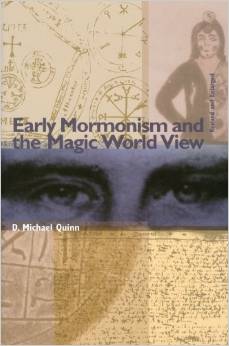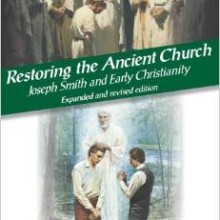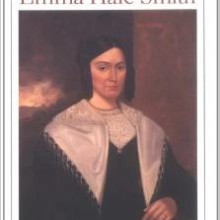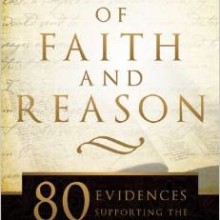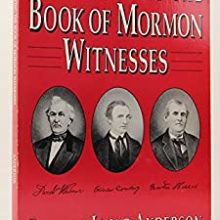D. Michael Quinn was born in 1944 in Pasadena, California. He studied English and philosophy at Brigham Young University in Provo, Utah—interrupted by a two-year LDS proselytizing mission to England (1963-65)—and graduated in 1968. Then followed three years of military service in Germany as a counter-intelligence agent.When he returned from Europe in 1971, Quinn began a master’s program in history at the University of Utah and half-time employment at the LDS Church Historian’s Office. He received his M.A. in 1973, then moved to New Haven, Connecticut, to continue his studies in history at Yale University. While a graduate student Quinn published in Brigham Young University Studies, the Journal of Mormon History, New York History, the Pacific Historical Review, and Utah Historical Quarterly. When he received his Ph.D. from Yale in 1976, his dissertation on the Mormon hierarchy as an elite power structure won the Frederick W. Beinecke and George W. Egleston awards.
That same year Quinn began twelve years of employment as a member of BYU’s history faculty. He received post-doctoral training in quantitative history at the Newbery Library in Chicago in 1982, and the next year served as associate director of BYU’s Vienna study-abroad program. In 1984 he received full professorship; two years later he became director of the graduate program in history. In 1986 Quinn received his most cherished award: Outstanding Teacher by vote of BYU’s graduating history majors.
While at BYU Quinn served on the board of editors for three scholarly journals and on the program committee for the Western History Association. He gave formal papers at annual meetings of the American Historical Association (AHA), the Mormon History Association (MHA), the Organization of American Historians, Sunstone Theological Symposium, Western History Association, the World Conference on Records, and by invitation to a conference jointly sponsored by the Fondation de la Maison des Sciences de l’Homme and the Laboratoire de Recherche sur L’Imaginaire Americain (University of Paris). He received best article awards from the Dialogue Foundation, the John Whitmer Historical Association (JWHA), and MHA. His last article as a BYU faculty member appeared in New Views of Mormon History: A Collection of Essays in Honor of Leonard J. Arrington (University of Utah Press, 1987).
His first book, J. Reuben Clark: The Church Years (Brigham Young University Press, 1983), received the best book award from MHA. Early Mormonism and the Magic World View (Signature Books, 1987) received best book awards from MHA and JWHA, as well as the Grace Arrington Award for Historical Excellence. However, due to disputes with BYU administrators over academic freedom, Quinn resigned his tenured position at BYU in 1988. Since then he has worked as an independent scholar.
After resigning from BYU he received long-term fellowships from the Huntington Library in southern California (twice), the National Endowment for the Humanities (twice), and Indiana University-Purdue University, as well as a major honorarium from the American Academy of Arts and Sciences. He has edited The New Mormon History: Revisionist Essays on the Past (Signature Books, 1992) and published essays in Under an Open Sky: Rethinking America’s Western Past (Norton, 1992), Faithful History: Essays on Writing Mormon History (Signature Books, 1992), Women and Authority: Re-emerging Mormon Feminism (Signature Books, 1992), Fundamentalisms and Society: Reclaiming the Sciences, the Family, and Education (University of Chicago Press, 1993), the New Encyclopedia of the American West (Yale University Press, 1998), and American National Biography (Oxford University Press, forthcoming).
In May 1994 he received the T. Edgar Lyon Award for Excellence from MHA. He has subsequently completed four books: The Mormon Hierarchy: Origins of Power (Signature Books, 1994); Same-Sex Dynamics among Nineteenth-Century Americans: A Mormon Example (University of Illinois Press, 1996), which received the 1997 AHA award for best book by an independent scholar; The Mormon Hierarchy: Extensions of Power (Signature Books, 1997); and the revised Early Mormonism and the Magic World View (Signature Books, 1998), which is twice the size of the original edition. He has begun preliminary work on a social history of late-twentieth-century sexuality.
Quinn has served in the 1990s as a historical consultant for four Public Broadcasting Service documentaries: Joe Hill, A Matter of Principle, The Mormon Rebellion, and Utah: The Struggle for Statehood, and for the Canadian Broadcasting Corporation’s L’Etat Mormon (The Mormon State). He has been a guest lecturer at the Graduate School of Claremont Colleges and at four Utah universities. In addition, he has been the keynote speaker at meetings of the American Academy of Arts and Sciences, the Center for the Study of Religion and American Culture, the Chicago Humanities Symposium, the Utah chapter of the American Civil Liberties Union, and the Washington State Historical Society. In 1998 he served on an NEH panel for selecting recipients of year-long fellowships.
Quinn has been featured in Christianity Today, the Chronicle of Higher Education, Lingua Franca, the Los Angeles Times, New York Times, Newsweek, Publishers Weekly, Time, and the Washington Post. In 1997 a biographical sketch and discussion of his writing techniques appeared in Contemporary Authors.
